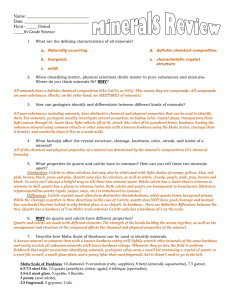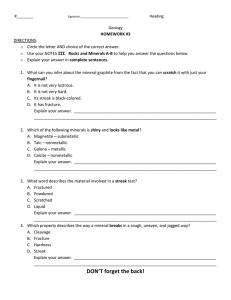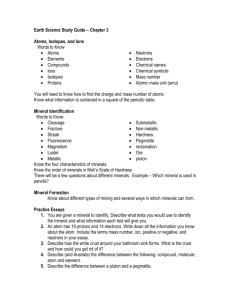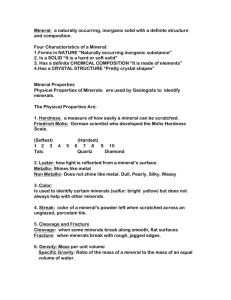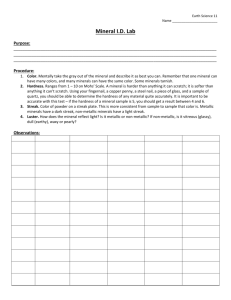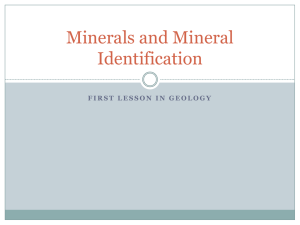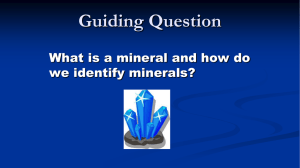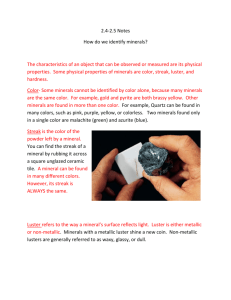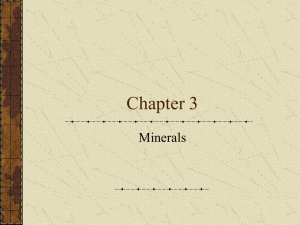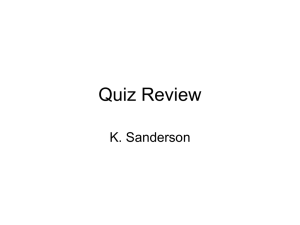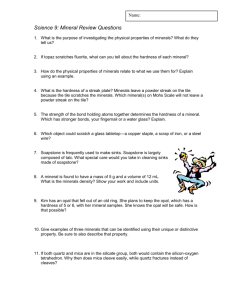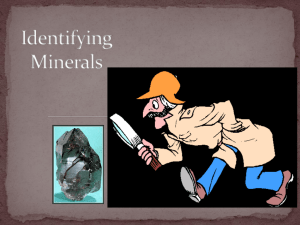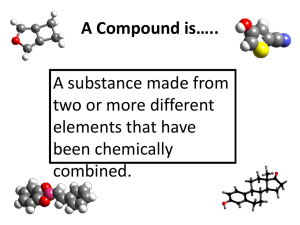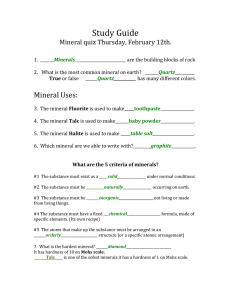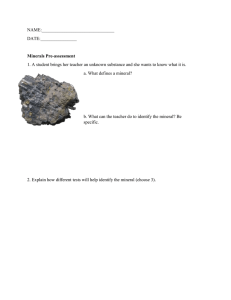Minerals Mineral is naturally occurring, inorganic solid with a
advertisement
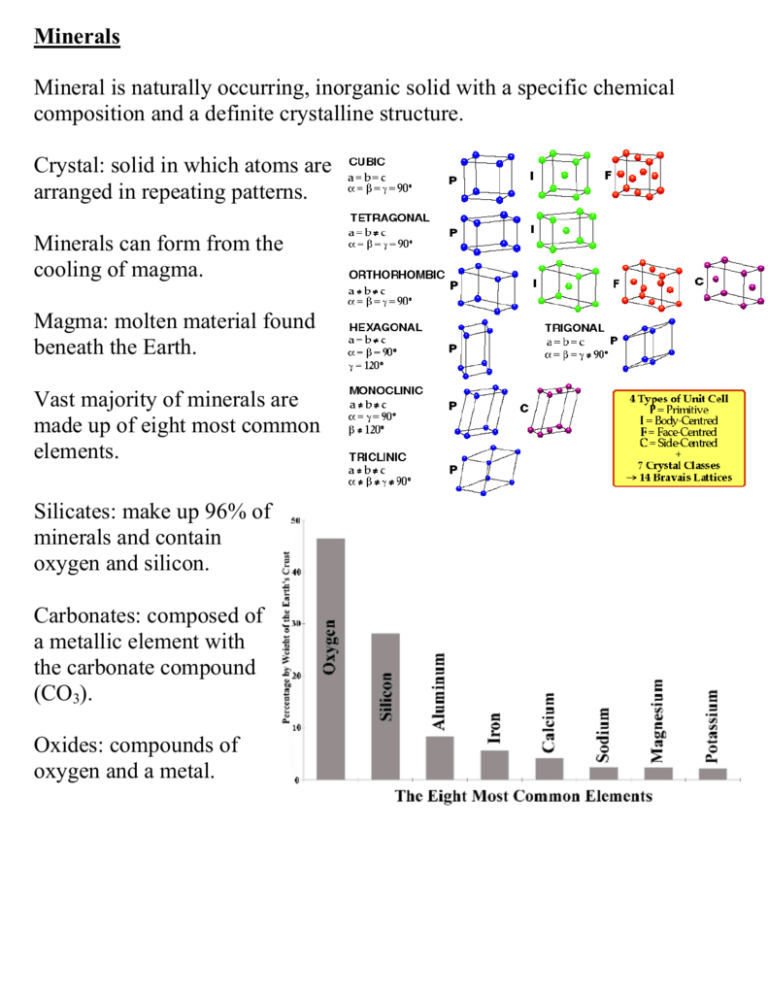
Minerals Mineral is naturally occurring, inorganic solid with a specific chemical composition and a definite crystalline structure. Crystal: solid in which atoms are arranged in repeating patterns. Minerals can form from the cooling of magma. Magma: molten material found beneath the Earth. Vast majority of minerals are made up of eight most common elements. Silicates: make up 96% of minerals and contain oxygen and silicon. Carbonates: composed of a metallic element with the carbonate compound (CO3). Oxides: compounds of oxygen and a metal. Identifying Minerals Color: one of most noticeable characteristics. Caused by presence of trace elements. Luster: the way that a mineral reflects light (i.e.: how shinny it is). Described as either metallic (e.g.: silver, gold) or non-metallic (sulfur, quartz). Texture: describes how mineral feels to the touch (e.g.: smooth, rough, greasy, soapy and glassy). Streak: is the color of a mineral when it is broken up and powdered. Mineral rubbed across a porcelain plate with sometimes leave a streak (e.g.: pyrite leaves a greenish-black) streak. Hardness: is a measure of how easily a mineral can be scratched. Mohs hardness scale 1-10. Talc (easily scratched) is a 1 on Mohs, while a diamond is very hard to scratch is a 10. Cleavage: measure of how easily and evenly a mineral splits along a flat plane. Fracture: minerals that break with rough or jagged edges. Density: d = m / v (e.g.: pyrite has a density of 5.2 g/cm3 and gold has density of 19.0 g/cm3).
